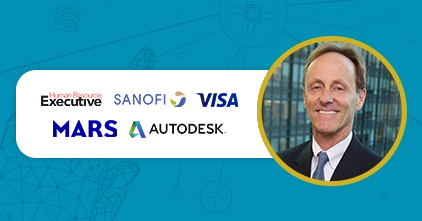- Language learning happens through imitation
- Language is best acquired through experiential learning
- Social learning fosters collaborative spirit that helps in language learning
- Social learning motivates and engages language learners
- Social learning enables employees to take responsibility for their own learning
- Conclusion
Start leveraging social learning to easily boost learner engagement in your language training program. Here are 5 reasons why social learning aids in your employees’ language training.

The demand for soft skills focused on improving business communication is on the rise. One interesting reason is that global organizations are now looking into how they can harness the knowledge of their subject matter experts and use it as a competitive advantage.
With corporate training now regarded as a necessity, L&D and HR professionals are attempting to seek more solutions on how they can improve their corporate language training strategy. One popular method constantly used today is social learning.
Basically, social learning (in business learning context) refers to the informal ways that we learn from our colleagues. This is done through social technologies, peer-to-peer training, coaching, and mentoring. These social tools enable learners to share, debate, and collaborate.
According to the Brandon Hall Group, 73% of surveyed organizations expect to increase their focus on social learning. This means that more and more companies globally are getting optimistic when it comes to prioritizing social learning in their corporate training efforts. Good news is that social learning accounts for at least 75% of knowledge employees attain in the workplace.
But social learning isn’t a novel concept. By nature, human beings are social animals. Whether or not you’re conscious about it, we learn through social interactions and observations. This is why it’s an effective way to learn a second language.
Here are some points why social learning is beneficial for language learners:
Language learning happens through imitation
B.F. Skinner, a famous American social psychologist, proposed that people acquire language through imitation and reinforcement. This means that individuals learn language through observation and mimicking others while also responding to stimuli they receive from the people around them.
Nowadays, imitating what people say has become a habit. And this is where language acquisition begins. In social learning, getting your learners to interact with one another — either through online social tools or through personal interaction or maybe both — encourages learning through imitation. Imagine if one of your employees already has a high English level, and is relatively more fluent in speaking in English compared to her colleagues. Other learners can start brushing up their English language skills through observing her — imitating her pronunciation, choice of words, etc.
Despite this, we can all agree that language learning and acquisition aren’t mainly a matter of imitation. But it still holds true that imitation is still an effective way to learn a language because there’s this thing called deep structure imitation.
Compared to mere surface structure, deep structure in linguistics allows the native speaker of a language to know what the sentence means because it expresses the semantic contents (concerned with meaning) of a sentence. Surface structure, on the other hand, only determines its phonetic form (concerned only with speech sounds). But keep in mind that imitation isn’t the be all and end all of language acquisition.

Language is best acquired through experiential learning
We’re in the era of the 4th Industrial Revolution. This means that almost everything we do now requires the use of computers and machines to achieve more productivity and efficiency. For example, while participating in virtual classes involving other colleagues and learners, you can maximize the language learning experience through simulations and role plays. These provide you with context-based situations that can help you learn your target language better depending on specific situations and contexts that are tailored to your current needs and goals.
Social learning in your organization also maximizes the skills and knowledge of your organization’s subject matter experts. A great example is that if you have a native Spanish speaker in your company, maybe she can aid in supplementing the language learning activities of your employees. She can also share some of her knowledge about the most commonly used German phrases.
In using the language for conversations on a daily basis — as long as it doesn’t get in the way of your learners’ jobs — it allows them to practice the language in action. It’s through experiential learning that social learning further enriches the language learning experience of your employees.
Social learning fosters collaborative spirit that helps in language learning
There’s always beauty in collaboration and teamwork. And social learning is a great way to break down communication silos within your organization. Social tools allow your learners to conduct peer-to-peer training among themselves, supplementing their formal language training and eLearning with “laymanized” language lessons.
Through social learning tools, your employees can share their knowledge and experiences regarding their online language training that may help other learners facing a similar situation. They can also train among themselves and put their language skills into practice. As a result, this forms bonds and collaboration among your employees.
There’s always beauty in collaboration and teamwork. And social learning is a great way to break down communication silos within your organization. Social tools allow your learners to conduct peer-to-peer training among themselves, supplementing their formal language training and eLearning with “laymanized” language lessons.
Through social learning tools, your employees can share their knowledge and experiences regarding their online language training that may help other learners facing a similar situation. They can also train among themselves and put their language skills into practice. As a result, this forms bonds and collaboration among your employees.

Social learning motivates and engages language learners
Unlike the formal classroom set-up and the eLearning portion of language learning, giving your employees the chance to practice their language skills through socializing, may it be in person or through visual classrooms, can help engage them not only in the language training but also in your organization as whole.
Coupled with microlearning, social learning is an effective strategy for your learners to easily absorb their language training. As a result, this can motivate them and engage themselves more in your language training program.
More interestingly, social learning tools appeal mostly to the chunk of today’s global workforce — Millennials. Research-based learning methods are attractive to them because they get to collaborate and share ideas with one another. Having social learning together with other workplace learning modalities, offers your learners different learning styles and options they can excel in.
In language learning, it’s essential for learners to be engaged and motivated in the learning process for learning to be more effective and employees to be more productive. Social learning is a great way to keep your learners in their stretch zone.
Social learning enables employees to take responsibility for their own learning
Most of the time, social learning involves individuals teaming up with other learners to make their learning more experiential and context-based. And this also gives learners the responsibility of their own learning journeys.
Having a sense of independence in your own learning gives you the ownership and responsibility to progress. Despite what we know about social learning, it also involves individual practices and activities. In learning, it’s always best to have a separate time when you can do the language activities alone to test your own skills and abilities. And after, you can immediately discuss with your colleagues the points or parts where you lack and where you thrive.

Conclusion
With the rise of learning experience platforms (LXPs) for language learning, it’s high time for your company to leverage social learning for language training. Global organizations are now more optimistic in using social learning tools, don’t let yours get left behind.



